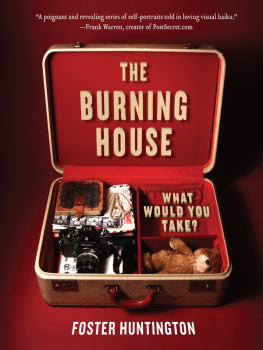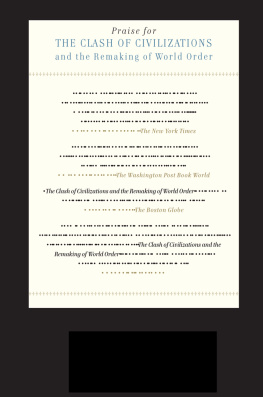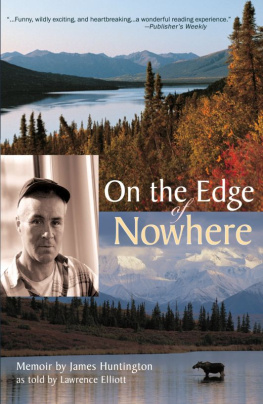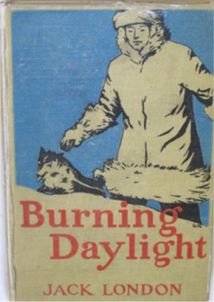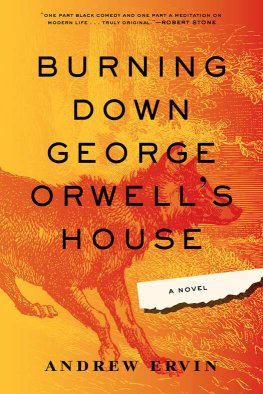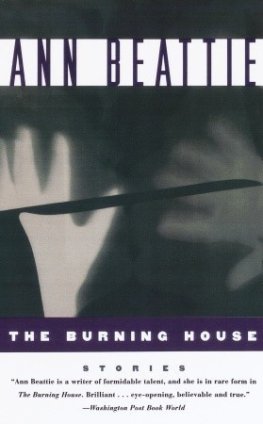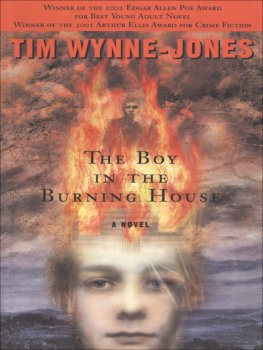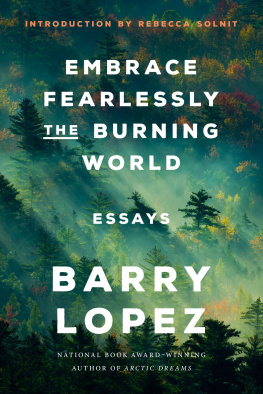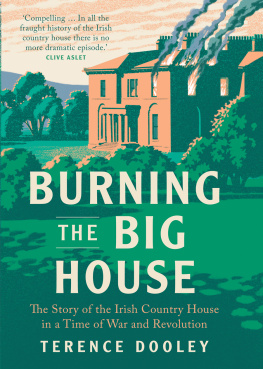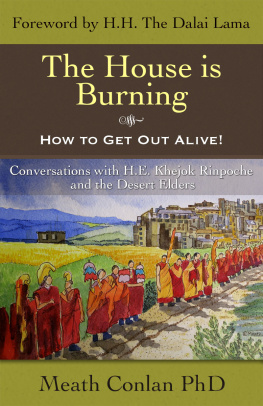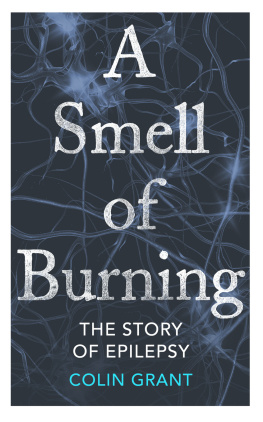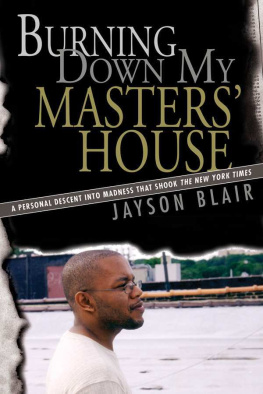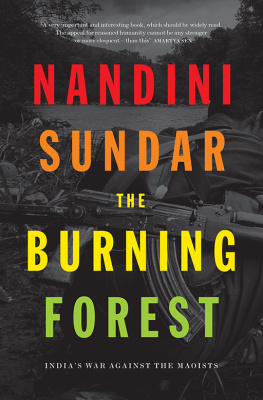This book is dedicated to the people who submitted their photos and stories to The Burning House. Without them, this book could never have been made.
If your house were on fire, what would you take with you? Its a conflict between whats practical, valuable, and sentimental. What you choose reflects your interests, background, and priorities. A mother of three in her late thirties has very different priorities from a single, twenty-two-year-old man. Their selections reflect these differences. Think of the photos and lists collected in this book as the answers to a one-question interview.
The Burning House spawned from a conversation among friends at a dinner party. People were discussing their online dating profiles and the questions they ask others on dating sites. I thought about it for a second and asked the group what they would take if their house were burning, thinking that the question would be a subtle way to get people to discuss their values.
Everyone at the table immediately had a response. The photographer said she would take her Hasselblad and as many boxes of negatives as she could grab. The musician said he would grab his Gibson guitar, a Les Paul, and an old paper napkin with his first song lyrics scribbled on it. The consultant would take a first-edition copy of The Grapes of Wrath given to her by her grandfather a few months before he passed away. Walking home that night, I realized that these answers reflected peoples interests but also exposed more intimate and human details about their lives, which they rarely shared with others. The conversation continued among our group for the next few days, with a series of emails announcing new additions to their lists and analyses of others lists. As our obsession with the topic and sharing each others answers continued, I thought it would be interesting to take this discussion wideand what better place than the web?
That weekend I thought about which objects of my own meant enough to me to pull from the flames, and I set about photographing what would be the first post for The Burning House blog. I also started asking other friends what they would take. Some needed further background and explanation, but most understood the question before I finished asking it. On May 10th, 2011 www.theburninghouse.com launched with ten posts. Within a few hours came my first submission from a complete stranger in Massachusetts, and then an hour later another submission came in from England.
As a child of the Internet generation, I was familiar with the idea of something going viral, but I never imagined it would happen to anything I initiated. The Burning House clearly raised a question that people wanted to both answer and discuss. Word spread quickly, and within just a few days the project was being written up in the media. This traction drove submissions to the site from all over the world. As curator, I was faced with an exciting but crucial decision in terms of which posts to include on the site. With the project only a few weeks old, I knew it was important to guide the posts in a way that made people from various backgrounds feel like they could be included. I also wanted to make sure the entries that made up the site were true to the discussion at handwhats genuinely valuable to a personand didnt allow the conversation to devolve into mere showboating of expensive possessions. I avoided posting photos that were only about the gear, focusing instead on the submissions that were dynamic and included irreplaceable items with clear personal meaning. And I sought for each post to complement and contrast the ones which preceded and followed. Although subtle, the selection of posts in the projects infancy established a precedent for both the visual quality of the submissions and their contents.
As The Burning House snowballed into something larger than I had ever hoped for, I decided to get more personally involved. I left my job in New York so that I could focus on expanding the blogs reach and in the process create a book. I bought a VW van and hit the road, looking for people to photograph.
For five months, I drove up and down the West Coast and around the Rockies, putting thousands of miles on my van in search of people other than typical blog readers. I wanted to expand the project generationally, geographically, and socioeconomically. I wanted to find people who had never heard of Tumblr, had never seen an iPad. With Richard Avedons In the American West as my inspiration, I traveled the countrys back roads looking for my subjects. Life on the road exposed me to a variety of people I never could have met if Id stayed in Manhattan. I asked people at gas stations in Nevada and homeless people in Denver back alleys to participate. A few said no, but most were eager to share their answers. Although the people I met on the road came from wildly different backgrounds, they approached the question in a similar way, evaluating what they cared about materially.
Their answers were full of surprises, with my personal favorite being Bill Barr, a sixty-five-year-old resident of Gothic, Colorado, a small research outpost situated eleven thousand feet above sea level in the Gunnison National Forest. While Gothics scant population swells from June to August each year with an influx of biology students, Bill lives there year round, cross-country skiing five miles to the nearest town just to pick up fresh produce. When asked what he would take, he walked over to a wall of Blu-ray discs and a hundred-inch HD projectorall powered by solar and hydroelectric energy from a nearby streamand pulled out a copy of The Princess Bride . Oh, and I would take my skis, so I could get out of here. I wouldnt have guessed that in a million years.
Hearing peoples stories and seeing their submissions throughout the course of working on this project has taught me that I need a lot fewer material possessions. When I first considered what I would save, I selected eighteen items. Six months into the project and my selection dropped down to just two (my revised list is the last one in the book). This reduction came about after chatting with people about what they would take and hearing their different responses. These stories from all over the worldand some from people that have actually been forced to take things with them in a catastrophemade me realize that I could live without my favorite belt or shoes. These conversations almost always centered on the conflict of what you want versus what you need. Sure it would be nice to save my favorite childhood book, Two Little Savages by Ernest Seaton Thompson, but do I need it? No. This continuous analysis prompted me to keep whittling down my list until it was comprised of just two items.
Today, developed countries are consuming more than ever before. This culture of consumption is often fueled by peoples desire to define themselves by the possessions they amass. The Burning House takes a different approach to personal definition. By removing easily replaceable objects and instead focusing on things unique to them, people are able to capture their personalities in a photograph. More to the point, the objects in the photographs act as stand-ins for key moments in peoples lives and thus, in a way, for the people themselves and all that has shaped them. Tidbits of where they live, what they do for a living, and what they care about manifest themselves in what they choose to include. The most unique items, and therefore the most identifiable to a specific person, often have little to no monetary value. Items like teddy bears, film negatives, and letters from friends are unique to a persons life and cannot be bought on Amazon. And while the four generations represented in this book expose many differences in peoples selections, at heart there are fundamental and telling similarities. At first blush the younger generations represented here might seem more tech focusedrepeatedly saving iPhones, laptops, and hard drivesbut the reality is that these choices mirror older generations valuing of film negatives, journals, and letters. These items address the same essential connection to others and to self-expression.

